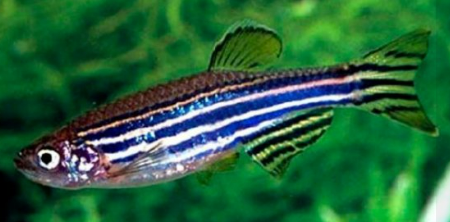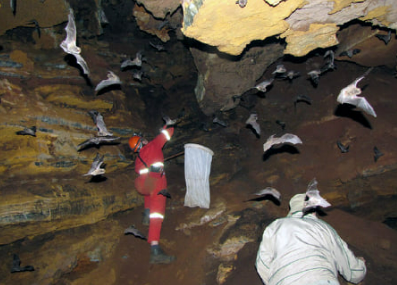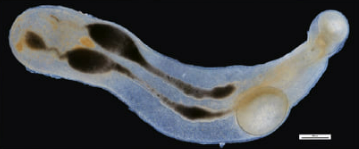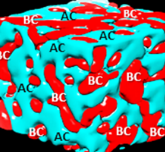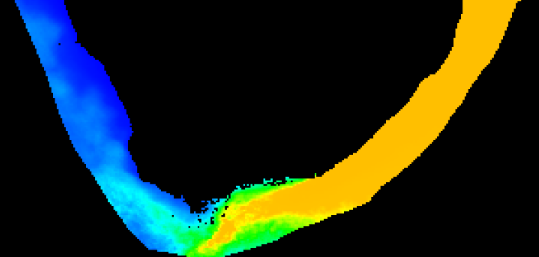Research fields
Home » Faculties of Science » Departments » Zoology » Research@Zoology »Aquatic Toxicology and Physiology
Many different types of contaminants/pollutants are present in aquatic ecosystems which could have potentially adverse effects on aquatic biota. Researchers in the Aquatic Toxicology & Physiology research group study the effect/s of contaminant exposure on the health of aquatic organisms by investigating an array of physiological responses, reproductive abnormalities, the development, -prevalence and structure of toxicopathic pre-neoplastic and neoplastic lesions in target organs of fish, as well as bio-accumulated levels of chemicals in different aquatic organisms. Studies also incorporate the assessment of the biological integrity of aquatic ecosystems and the bio-monitoring of these systems to assess change over time.
The research approach includes field surveys on polluted freshwater and marine ecosystems as well as controlled laboratory exposure studies in the well-equipped aquatic research aquarium facilities located on the APK campus at UJ. The focus is on identifying adverse effects of different contaminants at environmentally relevant concentrations and/or over various exposure-time periods. Effects are measured using a variety of biomarker responses ranging from subcellular biochemical responses to histopathological changes in target organs of fish. The contaminants studied include, amongst others, metals, growth stimulants and endocrine disrupting chemicals. The specific cause-and-effect relationship between a specific contaminant and the associated adverse effects are especially of interest. Recent studies have also investigated the edibility of fish with regards to bioaccumulated levels of pollutants in muscle tissues and the associated human health risk.
Contact:
Prof JC van Dyk
Prof R Greenfield
Dr A Nel
Dr L Mokae
Mrs R Lukhwareni
Cave ecology
My students and I are involved with the cave and groundwater ecology found in the dolomite deposits (also known as karst ecology) in the northern part of South Africa. Our research includes the study of the distribution of cave-dwelling bats and their feeding and roosting preferences. We also study cave- and groundwater-dwelling invertebrates such as amphipods, spiders, mites, nematodes and insects which are directly or indirectly dependent on bat guano for nutrition. We also look at the impact of Acid Mine Drainage not only on groundwater ecology, but also that of the rivers on the West Rand.
As a palaeontologist, I also do research and publish on the origin of mammals and the acquisition of mammalian characteristics. I am involved in studying the public perception of evolution and the teaching of evolution in schools.
For more information contact: Prof François Durand
Parasitology
In the Parasitology section studies are conducted on a variety of helminth and crustacean parasites of freshwater and marine fishes. The morphology and life styles of the parasites receive attention. The effect of the parasites on their hosts, their wound inflicting structures and the response of the host are investigated with the aid of state of the art apparatus. As a practical application parasites are studied as po Branchiura and Copepoda are studied with the aim of understanding the host parasite interface. Structures related to feeding and attachment, and the associated pathological changes to the host, have been described. The anatomy of the digestive and reproductive systems has also been described and the occurrence of spermatophores has been documented for the first time in Argulus and Chonopeltis. The enigmatic Dipteropeltis is currently studied in collaboration with Dr Jose Malta from INPA (Manaus, Brazil).
Furthermore, fish parasites are studied as sentinels for water quality, and these studies focus on accumulation of metals in various parasite species. Techniques are continuously developed to illustrate the location of metal sequestration. The accumulation of various metals in Bothriocephalus acheilognathi was described and it was shown that the metal concentration in the cestode was up to a 1000x higher than in its host for certain metals. It was concluded that this is the result of the inability of the invertebrate to bioregulate. Similar work in other fish parasites is currently underway and preliminary results indicate that metal concentration is also age related. Prof Franz Jirsa (Vienna, Austria) collaborates on some of these projects.
Various Monogenea species are studied in the Vaal River. In 2013, descriptions for two Paradiplozoon species were accepted and appeared online (Journal of Helminthology). Both Paradiplozoon ichthyoxanthon and Paradiplozoon vaalense were studied with light and scanning microscopy, and DNA sequencing supported the morphological work. This project is executed in collaboration with various postgraduate students and Prof Bettine Jansen van Vuuren. Dactylogyrus, Quadricanthus and Cichlidiogyrus are also studied and species descriptions with Dionne Crafford (A PhD student at the time) have recently been published in the journal African Zoology. The distribution patterns of these species in the host in and spatial area and in relation to water quality has been recorded in baseline studies.
For more information contact: Prof Annemarié Oldewage
Previous students are employed in the following sectors:
- Teaching (secondary and tertiary level)
- Nature conservation
- Environmental management
- Veterinary research (private companies and government)
- Government and parastatal agencies (such as Water Affairs, Nature Conservation and ESKOM)
Genetics
Genetic methods can be used to study of how migration, natural selection, mutation and genetic drift impact on the genetic make-up of a population or species. At UJ’s Centre for Ecological Genomics and Wildlife Conservation, we focus primarily on the identification of genetic population structure, connectivity between populations, and evolution. The genetic data generated in our labs can provide valuable information for the management of threatened, exploited or invasive species and, in conjunction with traditional morphological methods, they can help to resolve a species’ taxonomic status. The methods used in our lab (including DNA barcoding, microsatellite genotyping, environmental DNA metabarcoding, RADseq/GBS etc.) are also used in related fields such as forensic science, biotechnology and medical genetics… so even if our students don’t eventually become zoologists, they enter the job market with plenty of useful skills.
Contact:
Prof Bettine Jansen van Vuuren (terrestrial molecular ecology, invasion biology)
Prof Peter Teske (marine biodiversity, population genomics)
Respiration Physiology
My research interests are in the area of comparative functional morphology of the gas exchangers. The development of respiratory structures are investigated by molecular biological studies; the morphologies are studied by microscopic techniques and three-dimensional reconstruction, and; the morphometric aspects are quantified by stereological methods.
Contact: Prof John Maina
Freshwater Ecology
Primary research being undertaken in the freshwater ecology lab concerns the fields of wetland and stream ecology, particularly related to aquatic invertebrates as indicators of ecosystem health in these environments. The work in my lab focusses on providing a better understanding of these shallow aquatic environments by studying their invertebrate communities in relation to abiotic drivers such as water chemistry and human impact factors such as surrounding land use changes. Current research themes undertaken by postgraduate students include:
Assessment of climate change impacts on stream and wetland ecosystems in South Africa. Specifically, several postgraduate students are performing thermal tolerance experiments to determine which aquatic invertebrates are most sensitive to thermal changes brought about by climate change.
The role of wetlands in improving the aquatic health of streams in and around Gauteng. This project uses field- and laboratory-based methods to investigate whether wetlands are still functioning effectively in purifying polluted stream water in the province.
Investigating the biodiversity and ecology of intermittent (temporary) streams. Streams that dry up for part of the year are more common in South Africa than perennial streams. Yet we know close to nothing about the ecology and biodiversity of these systems. Fundamental spatio-temporal patterns and processes are being investigated in this project.
Contact: Dr Matthew Bird
Ecological niche modelling
In ecological niche modelling, a model is made to describe the niche of a species. Niches are typically modelled using climatic variables, but can include any available data such as terrain, soil or anthropogenic land use. This model can then be projected onto a landscape. Niche modelling allows the specific environmental requirements of a species to be identified. It also allow the niche to be projected onto a range of other scenarios such as: future climate scenarios to predict the effects of climate change on species distributions; historical climates to examine the legacy of glacial cycling on modern biogeography; or non-native environments to examine the invasive potential of the species. Ecological niche modelling also works well in conjunction with phylogeographic studies, where it can be used to examine niche separation between different genetic groups.
Contact: Dr Govan Pahad

